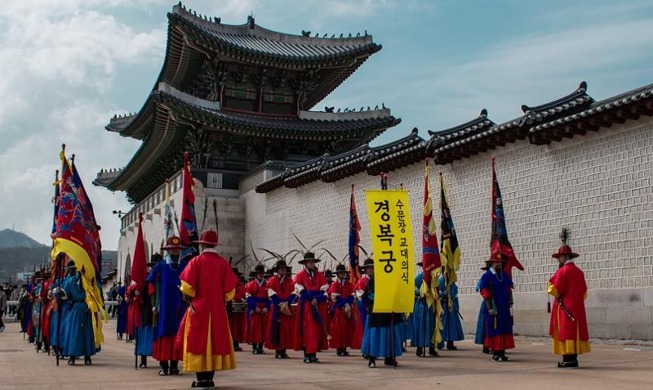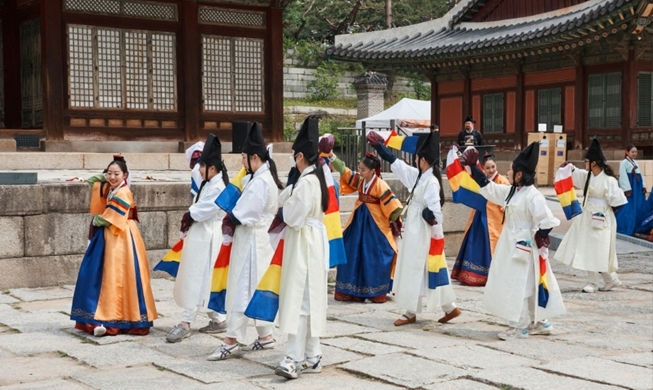-
 Korea.net's 24-hour YouTube channel
Korea.net's 24-hour YouTube channel- NEWS FOCUS
- ABOUT KOREA
- EVENTS
- RESOURCES
- GOVERNMENT
- ABOUT US
- 한국어
- English
- 日本語
- 中文
- العربية
- Español
- Français
- Deutsch
- Pусский
- Tiếng Việt
- Indonesian
|
Monthly KOREA’s March 2020 issue. ▶Link to Webzine |
Revival of Hanbok
Hanbok (traditional Korean attire) boasts 5,000 years of history and the spirit of the Korean people. Modern Korea has seen Hanbok’s influence decline with the advent of Western fashion, but in recent years, youths have shown renewed interest in the clothing’s tradition and culture under the “newtro” trend, or combining the old with the new. More contemporary versions of Hanbok that stress daily use of the clothing could put it on a trajectory toward revival.
Written & photographed by Park Sunyoung (Director, Hanbok Advancement Center)
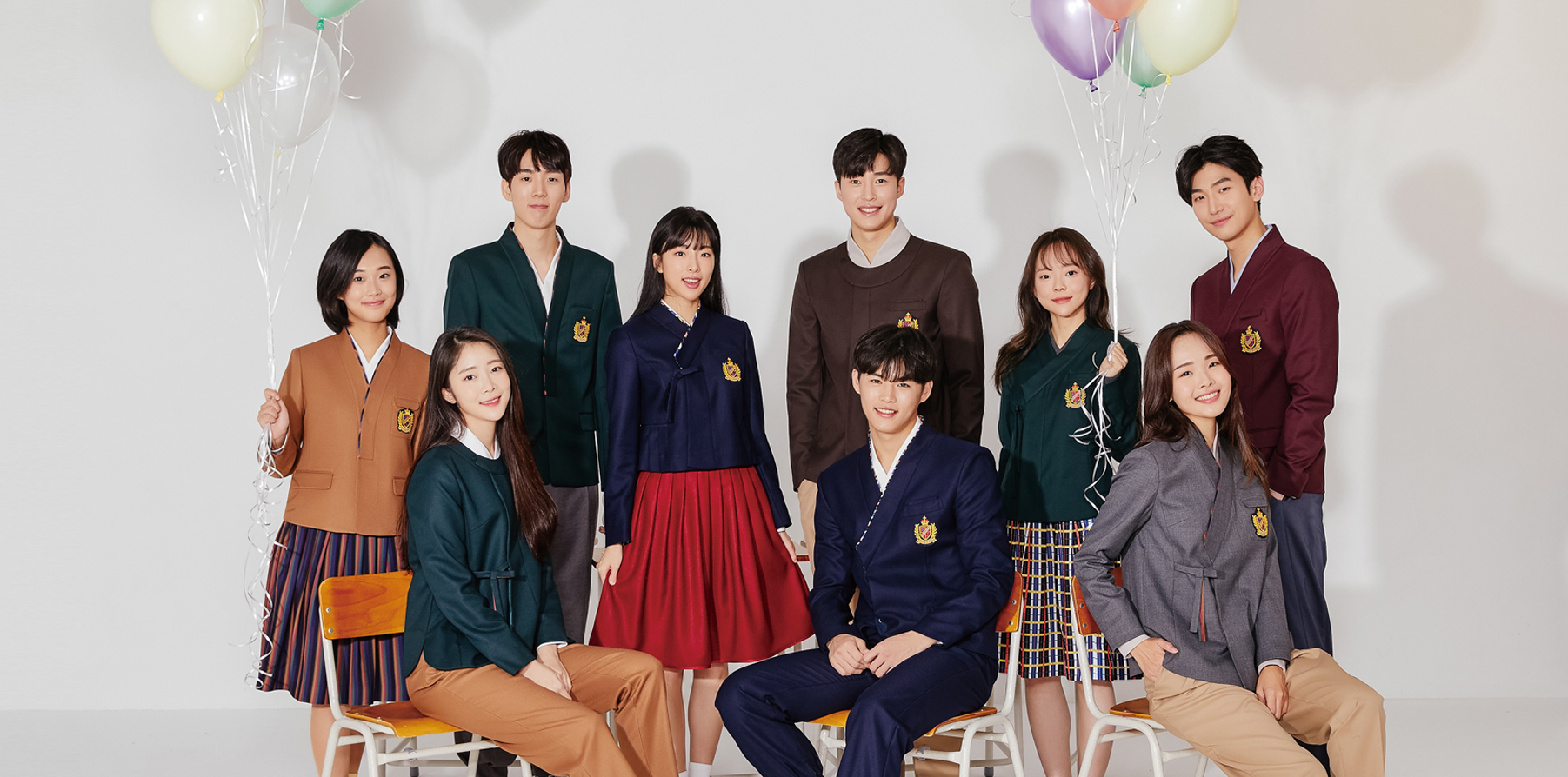
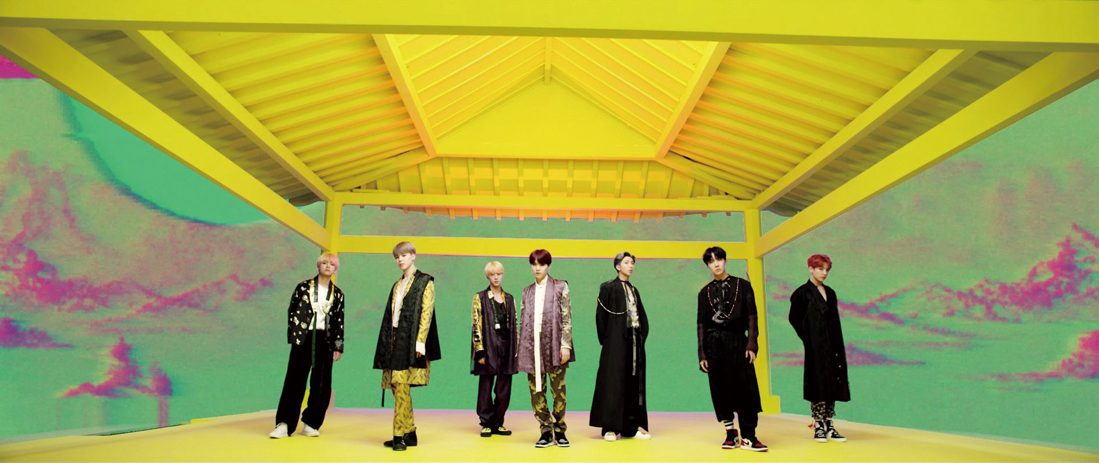
BTS members dress in Hanbok in their music video “Idol.” © BTS
Suitable for All
To celebrate Lunar New Year this year, the Korean Cultural Center in Sydney, Australia, on Feb. 5 co-hosted a Hanbok exhibition with the Hanbok Advancement Center titled “Hanbok: The Colors of Korean Lunar New Year.” At the event’s celebratory event, Sydney Mayor Clover Moore wore a green-colored, traditional Korean long hood, surprising ethnic Korean attendees and event staff alike with her extraordinary style. Underneath the hood, she kept on her usual red heels and black color, displaying a personalized medley of fashion. Moore also expressed her admiration of Korean designers for their reimagining of Hanbok in more modern forms and tapping into mainstream and global consciousness to that end.
When Kim Dong-hyun, who was selected Young Adult Hanbok Ambassador for 2019, was asked at his appointment ceremony whether he would wear a Hanbok-inspired school uniform, he said, “Why doesn’t Korea have such uniforms in the way British uniforms embody (U.K.) heritage?” Most school uniforms in Korea have the Western components of a vest, jacket, skirt, shirt and pants. A soon-to-be released Hanbok-inspired uniform, however, retains the functionality of a school uniform while applying the core design of traditional Korean design. Modern technology has augmented the activity-oriented functionality of Hanbok to aesthetically maximize comfort. This revolutionary uniform has received kudos from both the media and the Hanbok industry. Ensuring Hanbok’s use in everyday life is in line with the cultural values and tastes of Gen Z-ers.
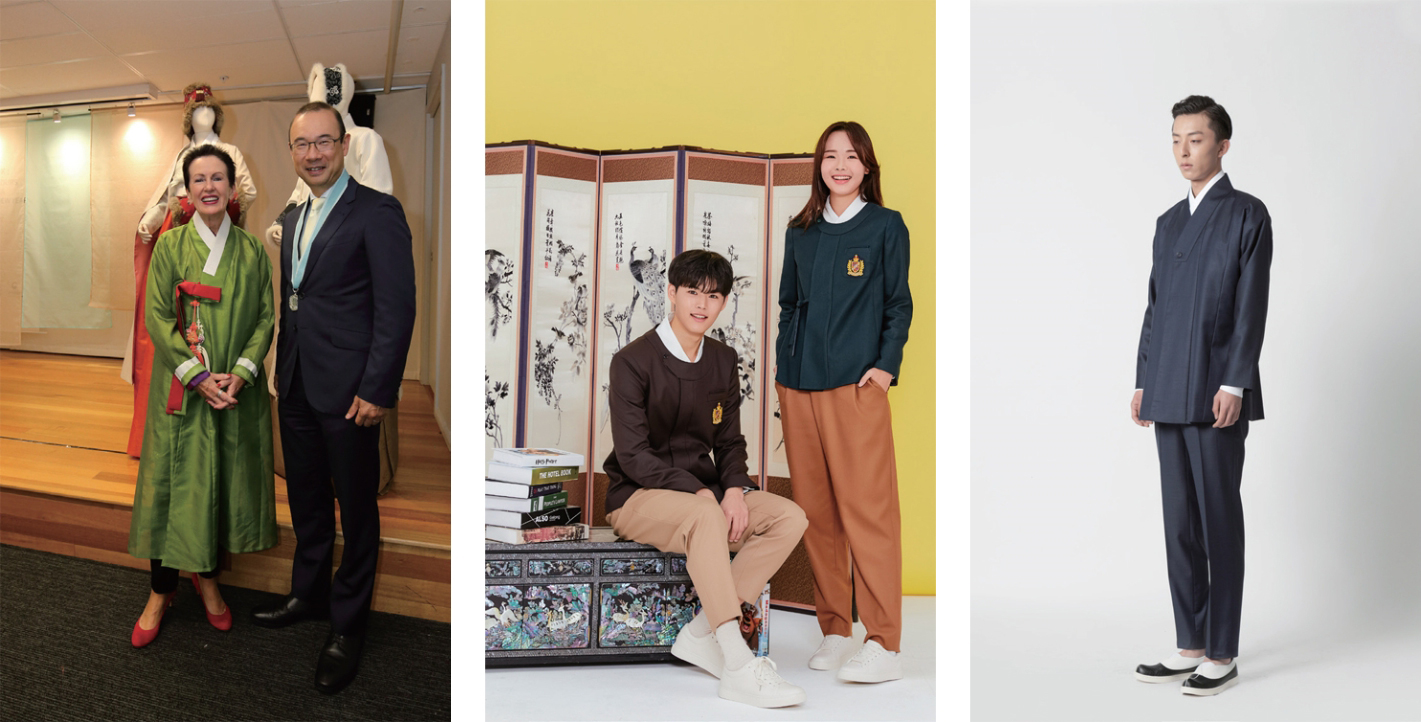
(Left) Sydney Mayor Clover Moore is clothed in Hanbok while standing next to city councilor Robert Kok © Park Seon-ok
(center) Models wear Hanbok-inspired school uniforms from a 2019 project for using Hanbok in everyday life. © Park Seon-ok
(right) Designer Park Seon-ok’s Hanbok formal wear and beoseonko slip-ons is part of a 2016 Hanbok development project. © Park Seon-ok
Young entrepreneurs have also established brands sporting uniquely designed Hanbok. On Wadiz, Korea’s answer to Kickstarter, the brand Leesle on Feb. 11 became the country’s second-most crowdfunded platform of all time. Also on the list of the 100 Wadiz Maker Awards were two brands utilizing Hanbok daily that each received funding of over USD 84,000. Everyday Hanbok is a category drawing more fans by fusing traditional elements with contemporary patterns and materials for practical maintenance like fabric and denim. Because today’s youths have a penchant for reinvigorating cultural value and meaning, their value-oriented consumption behavior heralds bright prospects for Hanbok’s foray onto mainstream usage.
Huge Potential

Designer Kim In-ja’s Hanbok for children, which uses primary colors, is displayed at the Korean Cultural Center’s Hanbok exhibition in Sydney. © Kim In-ja
Why are people around the world drawn to Hanbok? The most cited reason is color. Hanbok’s ornamental components portray shades extensively sourced from natural vista. Starting from primary colors plus the hues in between, gradients are arranged in various mixtures, arrangements and blends for artistic and creative output. Each color encapsulates its own meaning; even minute bits of fabric embody exquisite hues.
Silk, a frequently used material in Hanbok, is also part of many variations; its levels of glossiness and transparency complement visual patterns for heightened aestheticism.
Traditions capture and fluctuate with the times. Fashion trends reflect clothing choices with timely sentiment. Given the recent trend of “newtro,” or the concept of new takes on old things, Hanbok is poised to emerge as a trend. Revived by the younger generation, Hanbok teems with potential to diversify design consumption patterns from full-on traditional outfits to combinations with more conventional denim or office wear. Whichever form is used, Hanbok is amplifying traditional culture’s value through greater use.
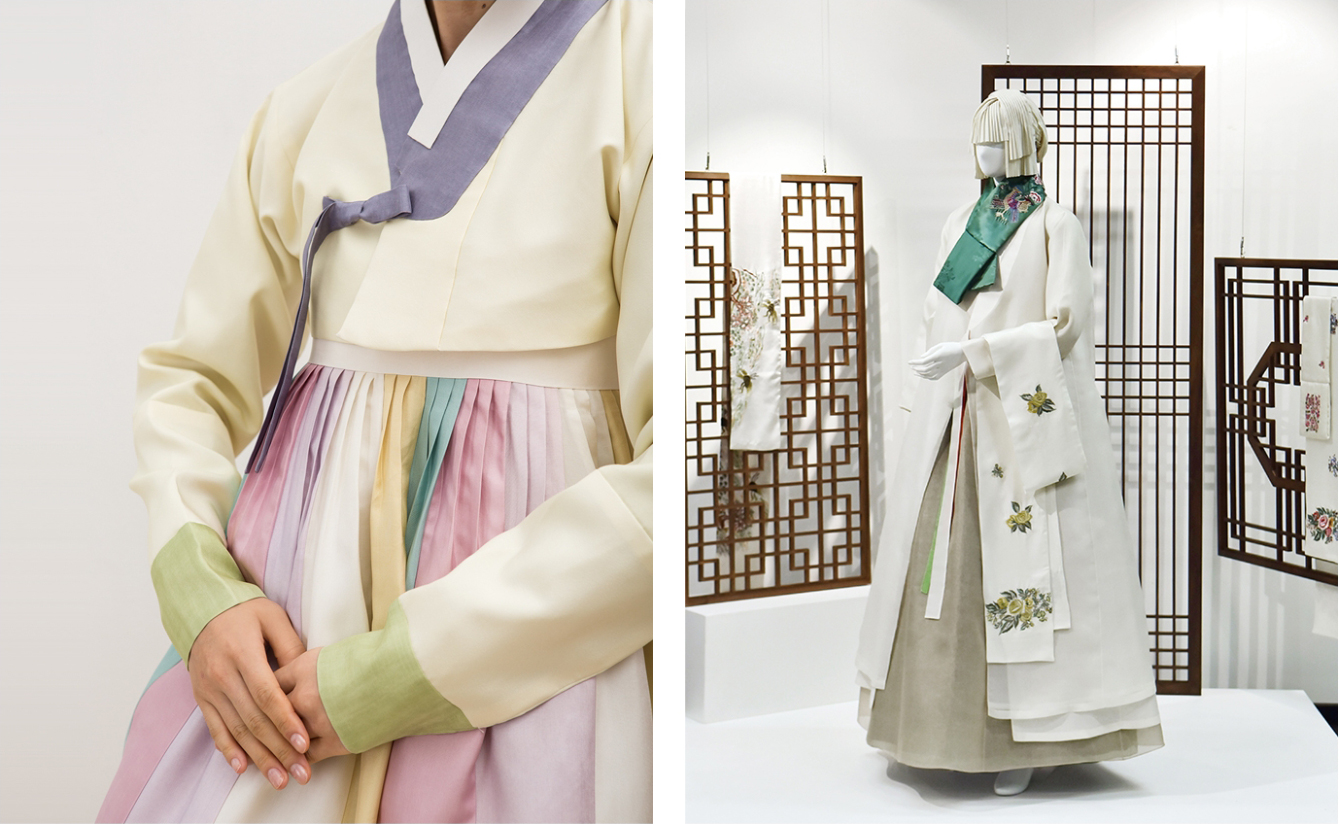
(Left) Designer Lee Hye-soon’s softly colored silk skirt jeogori is featured in the eighth edition of the Hanbok Advancement Center’s Magazine Hanbok. © Lee Hye-soon
(Right)Designer Lee Young Ae’s reinterpretation of traditional cloth and embroidery is shown at the Korean Cultural Center’s Hanbok exhibition in Sydney. © Lee Young Ae




